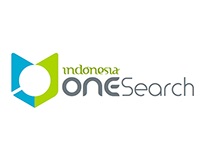PENGARUH KUALITAS RUANG DAN PERSEPSI PENGUNJUNG TERHADAP KEBERLANGSUNGAN RUANG PUBLIK Studi Kasus: Taman Kota Lapang Bhakti Kota Banjar
Abstract
Abstract: Taman Kota Lapang Bhakti is one of the public spaces in the city of Banjar whose function is quite vital. There is a placemaking phenomenon in this city park, where the southern area of the city park which is a commercial area is no longer operational at all, while the northern area which has the same function is still operational today. This study discusses in depth to find out the causes of this phenomenon. This phenomenon is studied with the theory of placemaking and space quality. The research method used is descriptive qualitative method by comparing the quality of space and visitors' perceptions of the northern and southern areas of the city park. While the data collection methods are in the form of observation, literature study, and interviews with visitors and management of this city park. Research findings based on an interview survey, 82.4% of visitors prefer to visit the northern commercial area compared to the southern area. This is due to several factors in their perception related to connectivity, activity, image and comfort. This factor also proves that the quality of space and the perception of visitors affect the sustainability of a public space. The recommendation from this problem is to make the southern area a special community area with non-commercial functions.
Keywords: space quality, perception, placemaking, public area
Full Text:
PDFReferences
Ammirudin, F. (2021). Tiga Ruang Publik di Kota Banjar yang Paling Terkenal. Tintaputih.net. Diakses dari https://www.tintaputih.net/wisata/pr-2721723670/tiga-ruang-publik-di-kota-banjar-yang-paling-terkenal
Arikunto, S. 2010. Prosedur Penelitian Suatu Pendekatan Praktik. Jakarta:Rineka Cipta.
BanjarWeb-Info. (2014). Sport Center/Lapang Bakti Kota Banjar. Seputarbanjarpatroman.Blogspot.Com. Diakses dari http://seputarbanjarpatroman.blogspot.com/2014/01/sport-centre-lapang-bakti-kota-banjar.html
Ernawati, J., Putri, A. Y., & Ramdani, S. (2017). Pola Aktivitas Pada Ruang Publik Taman Trunojoyo Malang. Jurnal Mahasiswa Jurusan Arsitektur Universitas Brawijaya, 5(4), 1–8. http://arsitektur.studentjournal.ub.ac.id
Google Inc. (2021). Google Maps: Ulasan Taman Kota Lapang Bhakti Kota Banjar diakses dari https://www.google.com/maps/place/Lapang+Bhakti/@-7.3683164,108.535,15z/data=!4m7!3m6!1s0x0:0xca7ddc1507522b8e!8m2!3d-7.3683164!4d108.535!9m1!1b1
Gunawan, A. (2011). Persepsi Dan Preferensi Warna Dalam Lanskap. Jurnal Lanskap Indonesia, 3(2). https://doi.org/10.29244/jli.2011.3.2.%p
Hillier, B., Penn, A., Hanson, J., Grajewski, T., & Xu, J. (1993). Natural movement: or, configuration and attraction in urban pedestrian movement. Environment & Planning B: Planning & Design, 20(1), 29–66. https://doi.org/10.1068/b200029
Pedoman Penyediaan dan Pemanfaatan Ruang Terbuka Hijau di Kawasan Perkotaan, (2008).
Project of Public Space. (2020). What Makes a Successful Society?. Pps.Org. https://doi.org/10.1007/978-3-540-28645-5_35
Rubianto, L., & Navastara, A. (2018). Karakteristik Ruang Kampung Tambak Asri Berdasarkan Pendekatan Placemaking. Jurnal Teknik ITS, 7(2). https://doi.org/10.12962/j23373539.v7i2.33680
Saputra, W., & Sarwadi, A. (2019). Persepsi Pengguna Terhadap Kualitas Ruang Terbuka Publik Pelataran Masjid Gedhe Kauman Melalui Pendekatan Placemaking. Jurnal Arsitektur Dan Perencanaan (JUARA), 2(1), 1–16. https://doi.org/10.31101/juara.v2i1.872
Syafriny, R., Tondobala, L., Waani, J. O., & Warouw, F. (2013). Place Making Di Ruang Publik Tepi Laut. Media Matrasain, 10(1), 64–76.
Wahyuni, S. (2019). Placemaking Sebagai Strategi Revitalisasi Kawasan Studi Kasus : Kawasan Pecinan Kota Makassar. Jurnal Linears, 1(2), 103–111. https://doi.org/10.26618/j-linears.v1i2.1815
Wyckoff, M. A. (2014). Definition of Placemaking: Four Different Types. Planning & Zoning News, 1, np. www.miplace.org.
DOI: https://doi.org/10.17509/jaz.v5i2.46029
Refbacks
- There are currently no refbacks.
Copyright (c) 2022 Stefy Prasasti Anggraini

This work is licensed under a Creative Commons Attribution-ShareAlike 4.0 International License.





